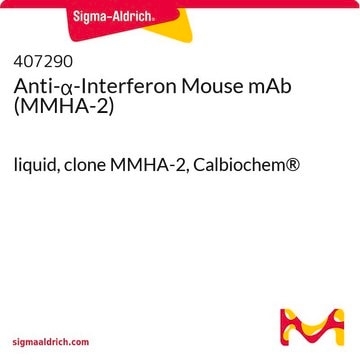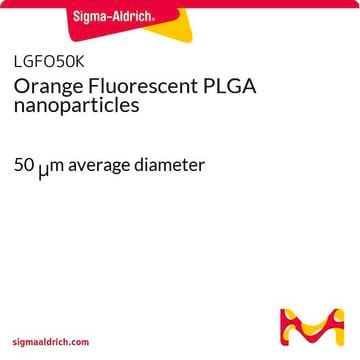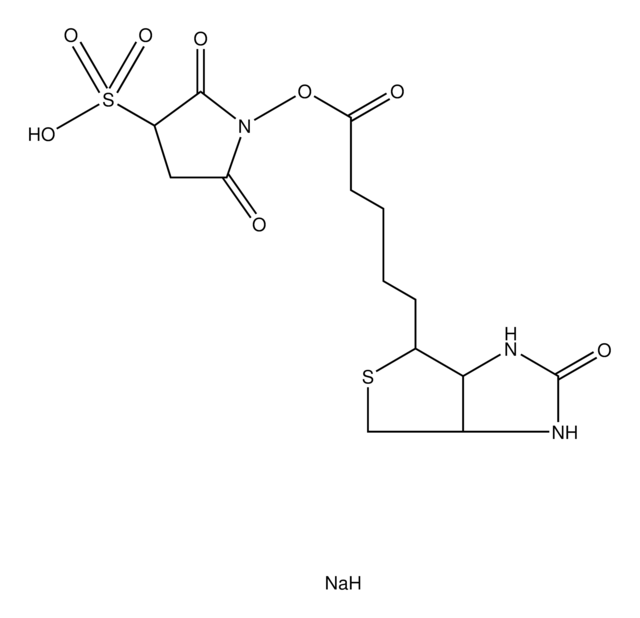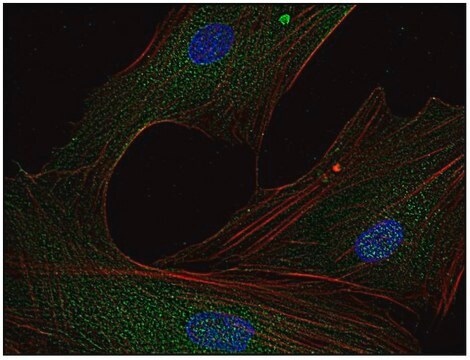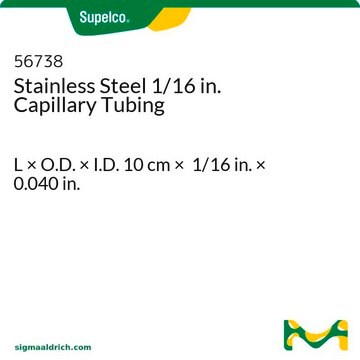MAB411
Anti-Interferon-α2 Antibody, clone ST2541
ascites fluid, clone ST2541, Chemicon®
Sinónimos:
Interferon alpha-2, IFN-alpha-2, Interferon alpha-A, LeIF A
About This Item
Productos recomendados
biological source
mouse
Quality Level
antibody form
ascites fluid
antibody product type
primary antibodies
clone
ST2541, monoclonal
species reactivity
human
manufacturer/tradename
Chemicon®
technique(s)
ELISA: suitable
affinity binding assay: suitable
neutralization: suitable
western blot: suitable
isotype
IgG1
NCBI accession no.
UniProt accession no.
shipped in
dry ice
target post-translational modification
unmodified
Gene Information
human ... IFNA2(3440)
General description
Specificity
Immunogen
Application
Neutralizing Analysis: A representative lot neutralized human IFN-αA (IFN-α2) and IFN-αN (produced by Nalmalwa human Burkitt′s lymphoma cells), but not IFN-α1, antiviral activity against Semliki Forest Virus in human WISH amniotic epithelial cell cultures (Shearer, M., et al. (1984). J. Immunol. 133(6):3096-3101).
Affinity Binding Assay: A representative lot captured human IFN-α2, but not human IFN-α1 (Shearer, M., et al. (1984). J. Immunol. 133(6):3096-3101).
ELISA Neutralizing Analysis: A representative lot was used as the detection antibody for the detection of human IFN-αN (produced by Nalmalwa human Burkitt′s lymphoma cells) by sandwich ELISA (Shearer, M., et al. (1984). J. Immunol. 133(6):3096-3101).
Western Blotting Analysis: A representative lot detected IFN-αA (IFN-α2) and IFN-αN (produced by Nalmalwa human Burkitt′s lymphoma cells) under reducing condition by Western blotting (Shearer, M., et al. (1984). J. Immunol. 133(6):3096-3101).
Inflammation & Immunology
Cytokines & Cytokine Receptors
Physical form
Storage and Stability
Legal Information
Disclaimer
¿No encuentra el producto adecuado?
Pruebe nuestro Herramienta de selección de productos.
Storage Class
10 - Combustible liquids
wgk_germany
WGK 1
flash_point_f
Not applicable
flash_point_c
Not applicable
Certificados de análisis (COA)
Busque Certificados de análisis (COA) introduciendo el número de lote del producto. Los números de lote se encuentran en la etiqueta del producto después de las palabras «Lot» o «Batch»
¿Ya tiene este producto?
Encuentre la documentación para los productos que ha comprado recientemente en la Biblioteca de documentos.
Nuestro equipo de científicos tiene experiencia en todas las áreas de investigación: Ciencias de la vida, Ciencia de los materiales, Síntesis química, Cromatografía, Analítica y muchas otras.
Póngase en contacto con el Servicio técnico